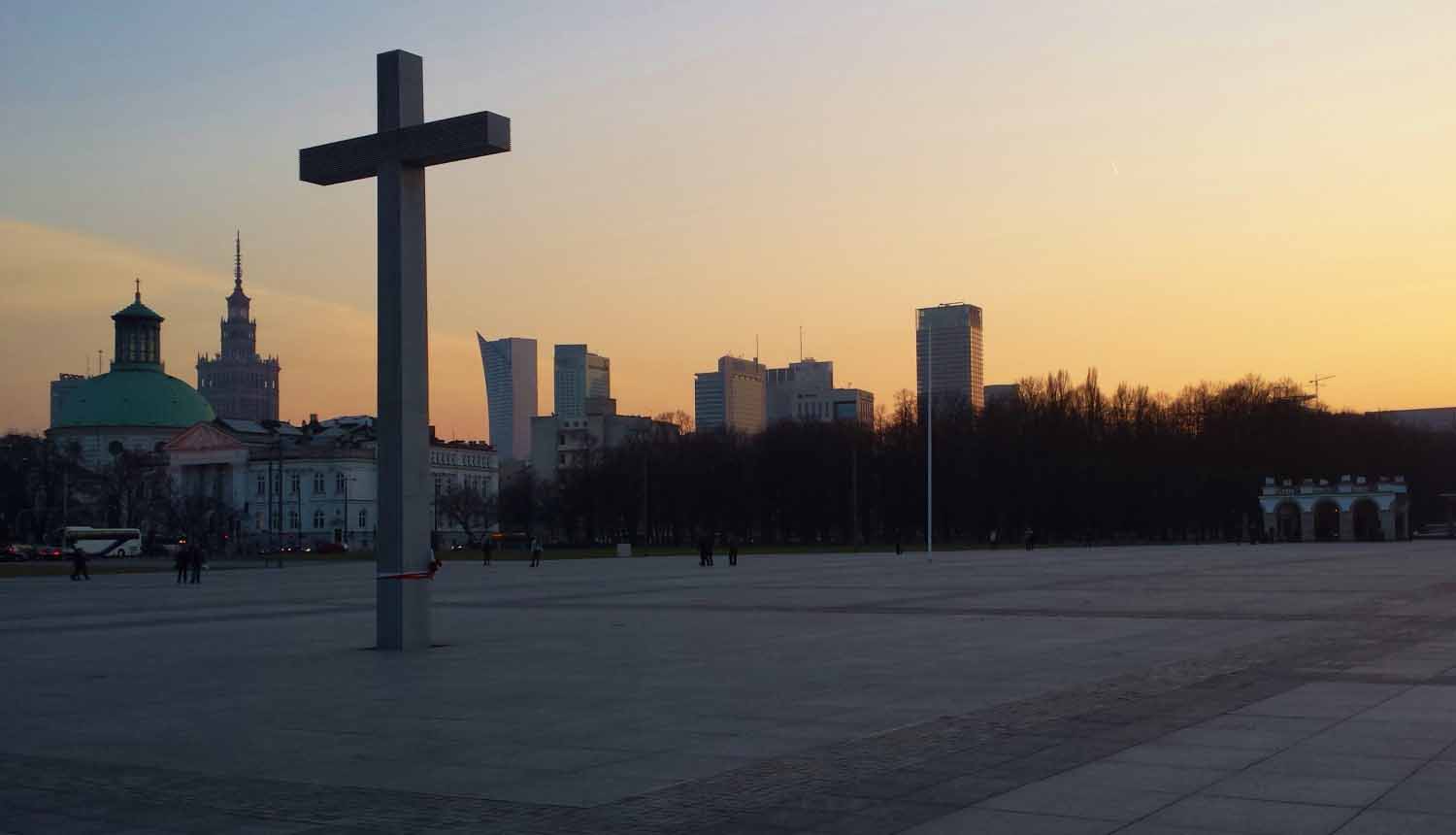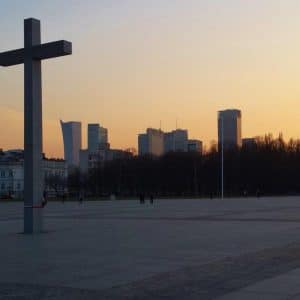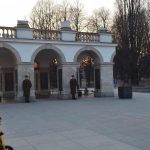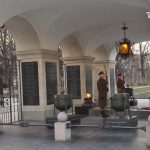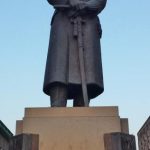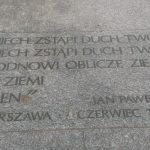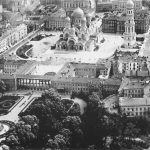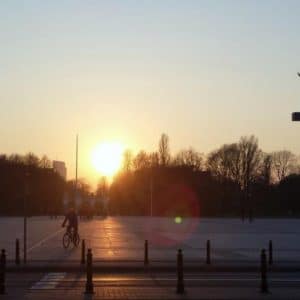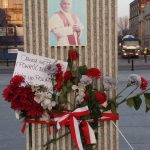Piłsudski Square is Warsaw’s largest open square. It is named for Jozef Piłsudski, a Polish WWI general, statesman, and national hero who turned the tide of the Polish-Soviet War in Poland’s favor by stopping the Soviet advance in the iconic 1920 Battle of Warsaw.
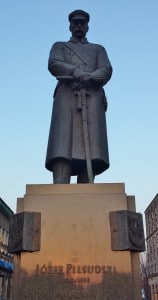
The Square is located in the heart of Warsaw between the city’s medieval Old Town and its high-rise financial center but was originally built as part of the “Saxon Axis,” a geometric East-West line of Baroque palaces (such as the former Saxon Palace) and gardens, by the Saxon German electors when they ruled as Kings of Poland in the early 18th Century.
Later, after the Napoleonic Wars when Warsaw was fully annexed as part of the Russian Empire and stripped of all autonomy, the square was dominated by the Russian Orthodox Alexander Nevskii Cathedral (built at the end of the 19th Century). Its construction was initiated by the Russian Governor General, who regarded its construction ‘as a crucial sign that Poland was part of the Russian land’ and would ‘by its very presence…declare to the world…that in the Western terrains along the Vistula, mighty Orthodoxy rule has taken root.’ (G. Andrusz, 2008) At 70 meters, it was the tallest building in the city at the time.
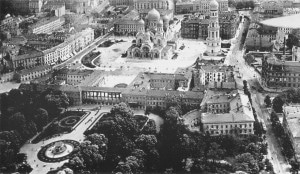
Then, following the foundation of the Second Polish Republic after WWI, the symbolic presence of the city’s former oppressor became intolerable for the new state and all traces of the formerly imposing cathedral were utterly destroyed. The empty square was then renamed after the Polish national hero as Józef Piłsudski Square.
During the Nazi occupation of Warsaw in WWII, the square was briefly called Adolf-Hitler-Platz. Thereupon, following the Red Army’s “liberation” of the city, all references to Piłsudski were erased (in the official Communist line, the Polish-Soviet war never happened) and the square was renamed “Victory Square” (plac Zwycięstwa) until the regime change in 1989 when the square was again redesignated Piłsudski Square. Although the Alexander Nevskii Cathedral was not rebuilt (the restoration of religious symbols was not a priority for the Soviets), the symbolic domination of Moscow over the Poles was restored in Stalin’s “gift” to the Polish people, i.e. the building of the Palace of Culture and Science, which remains the tallest building in Poland to this day.
Modern Warsaw, however, is now virtually a new creation with a layout that only partly resembles the historical city. These changes reflect a conscious planning and amendment of the values of the city’s (post)communist social and economic functions. Industries and warehouses are now located on the outskirts or between modern housing developments; park areas have tripled in size; and streets, though still largely based on the old network, have been widened. On the other hand, the Old and New towns, Nowy Świat Avenue, and many city churches and palaces have all been carefully reconstructed.
The Gothic St. John’s Cathedral and the red-brick wall fortifications around the Old Town (known as the Barbican) remain from the medieval period. The houses of the Old Town Market Square have also been restored to their 15th-century glory.
Moreover, there are many Baroque churches of the Counter-Reformation period, including the Jesuit Church (Kościół Matki Bożej Łaskawej) next to St. John’s arch-cathedral in the heart of the Old Town and the Church of the Holy Cross, which contains the heart of the Polish French composer Frédéric Chopin. The magnificently reconstructed Royal Castle, decorated in late 18th-century style is on the edge of the Old town.
Remnants of the tsarist era are evident in the Church of St. Alexander (Kościół Św. Aleksandra) in the middle of Three Crosses Square and in the vast Warsaw Citadel (Cytadela Warszawska, formerly known as the Alexander Citadel) north of the New Town along the river.
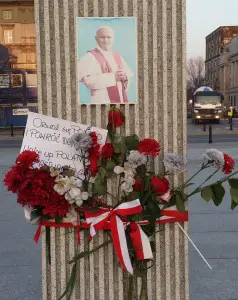
Today the square is essentially empty – aside from the monumental cross marking the spot where Pope John Paul II celebrated Holy Mass for the first time in Poland (1979) after being elected Pope in 1978. He ended his sermon that day with a call to “renew the face” of Poland. His words were very meaningful for Poles and were understood as an incentive for democratic change; they thus helped bolster the budding Solidarity movement.
The only other object marking the surface of Piłsudski Square is the Tomb to the Unknown Soldier, located on the West side of the square directly opposite the Polish Pope’s cross. Warsaw’s Tomb of the Unknown Soldier eternal flame is housed in fact inside the only remaining piece of the Saxon Palace, which was almost completely destroyed in WWII. The tomb houses (since 1925) the remains of a soldier that fell in the “Defense of Lwów” in 1918 (at the end of WWI and the beginning of the Polish-Ukrainian War) from the self-proclaimed West Ukrainian People’s Republic.
For groups and faculty-led tours, a visit to Piłsudski Square (and the layers of history surrounding it) can certainly be recommended.
Pilsudski Square
“plac marsz. Józefa Piłsudskiego”
Śródmieście Północne 00-078 Warszawa
Take bus 175 or 128 from Centrum
Open to the public 24/7


